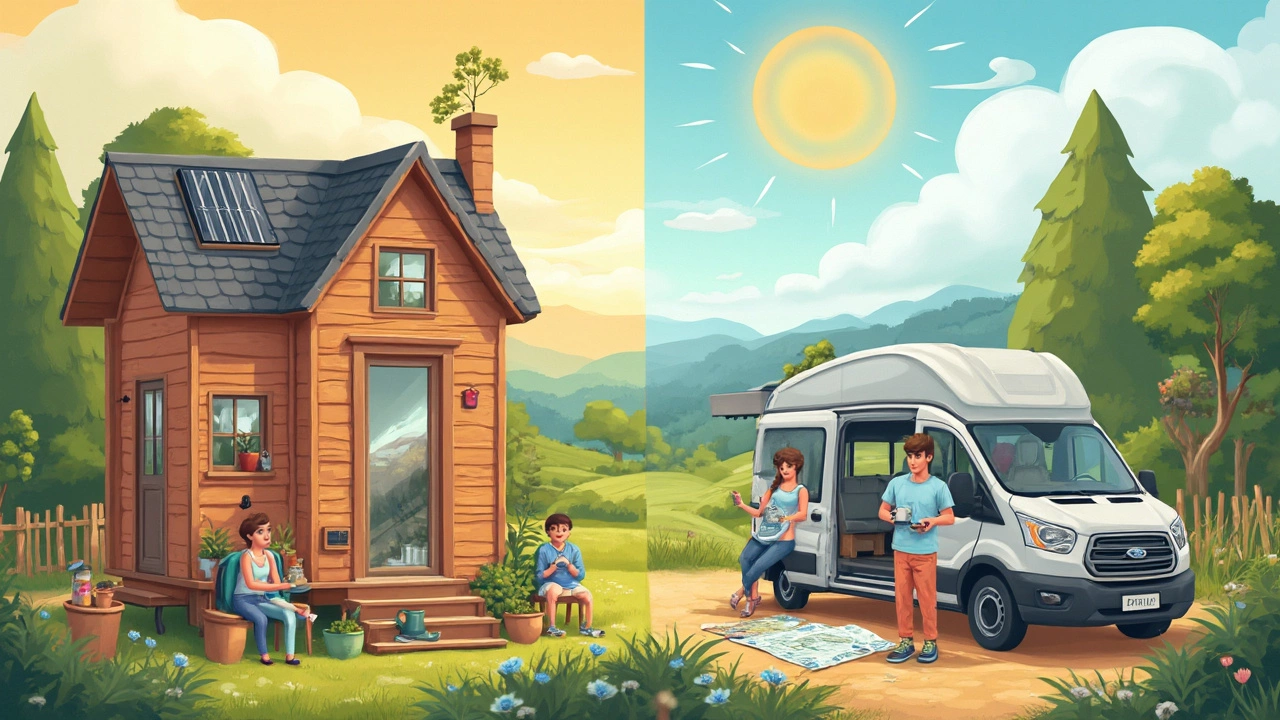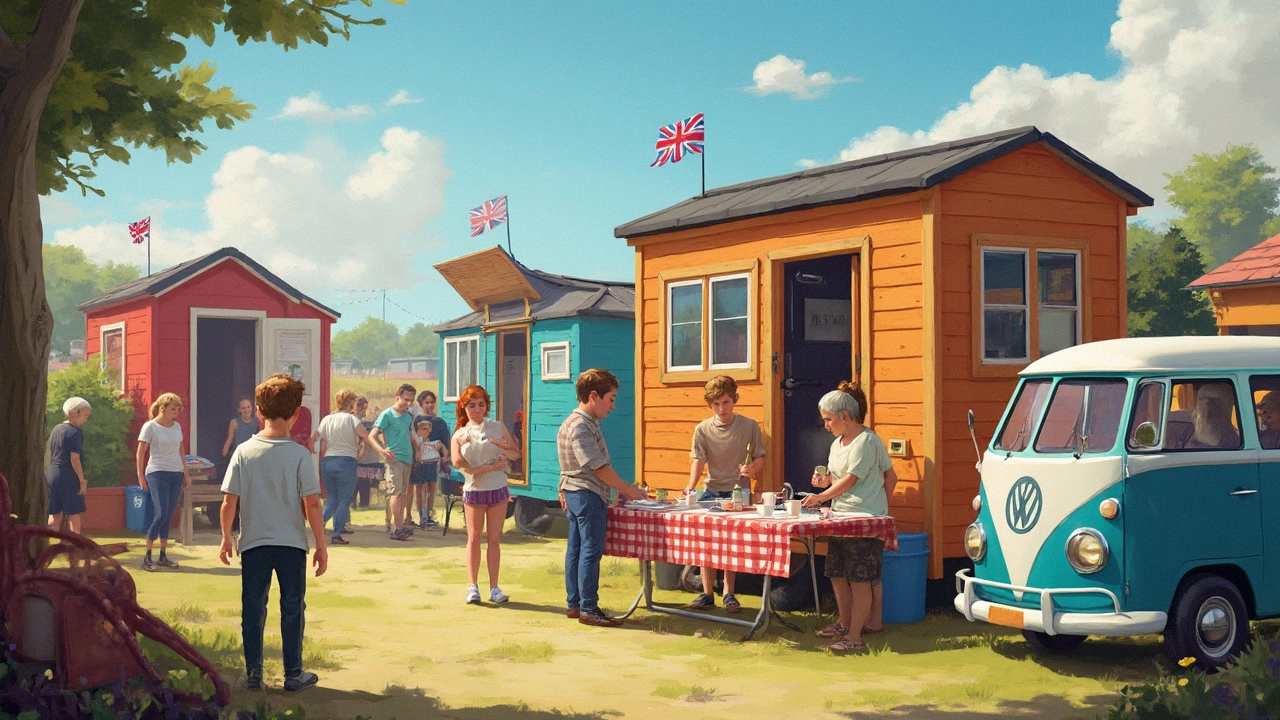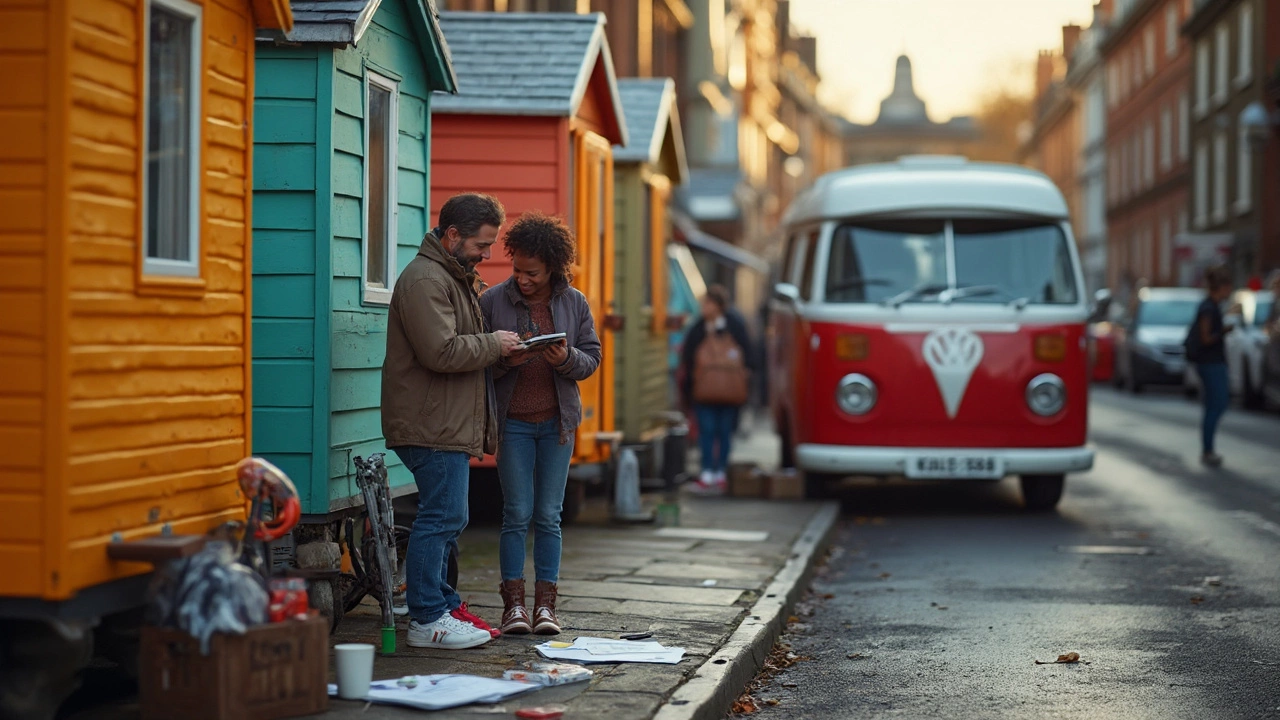If you’ve ever looked at your rent and wondered, “Could I do this cheaper in an RV or a tiny house?” you’re not alone. A lot of folks get drawn to the idea of downsizing for both freedom and financial relief. But does living small really mean saving big? Let’s talk real numbers, not just the dream.
First big thing to know: an RV and a tiny house are two different beasts. RVs can be surprisingly affordable upfront, especially if you buy used. Tiny homes, on the other hand, look cute on Instagram, but building or buying one can take a bigger bite out of your savings at the start. But is that the whole story? Not really. The costs don’t end once it’s in your name. You’ll want to think about where you’ll put it, what you’ll pay each month to keep it running, and whether you’re ready for the curveballs that come from life on wheels versus life on a tiny foundation.
- Upfront Costs: Purchase and Setup
- Monthly Living Expenses
- Where Can You Park It?
- Life on the Move vs. Staying Put
- Tips for Saving Money on Either Option
Upfront Costs: Purchase and Setup
When it comes to getting started, the sticker shock usually sets in before you ever turn a key. An RV and a tiny home don’t cost the same to buy or set up. If you're eyeing an RV, you’ll find a huge price range: used travel trailers can go for $10,000 or less, while brand-new Class A motorhomes blow past $200,000. Most people aiming for budget living land somewhere between $20,000 and $70,000 for a decent used RV that’s ready for full-time use.
Tiny homes, though, are a bit of a wild card. You can snag a DIY tiny home kit for as low as $25,000 (if you’ve got handyman skills), but hiring professionals or buying one pre-built usually lands you in the $50,000 to $120,000 range. Some folks try the ultra-budget route with a converted shed or cabin shell, but getting something comfortable (with insulation, plumbing, the works) will push you toward that higher end.
- RVs usually come with most things built-in—kitchen, bathroom, beds—meaning you don't have to do much after purchase. Just stock the fridge and you’re rolling.
- Tiny homes often need extra legwork and cash to make them live-in ready: site prep, skirting, utility hookups, and sometimes even a foundation (unless it’s on wheels).
- Both need insurance, and you’ll find basic rv living coverage is usually cheaper than tiny home insurance. It’s just easier to insure something that’s already considered a vehicle.
| Option | Low-End Price | High-End Price | Additional Setup Costs |
|---|---|---|---|
| Used RV (Travel Trailer/Class C) | $10,000 | $70,000 | $1,500 - $5,000 (maintenance, mods) |
| New RV (Motorhome) | $90,000 | $250,000 | $3,000 - $8,000 (add-ons, taxes) |
| DIY Tiny Home | $25,000 | $60,000 | $3,000 - $15,000 (site prep, permits) |
| Pro-Built Tiny Home | $50,000 | $120,000+ | $8,000 - $20,000 (delivery, hookups) |
If you’re watching every dollar, used RVs usually win for upfront costs. But don’t forget, a cheap RV can mean more repairs. Tiny homes usually cost more to get going, especially if you want to live in one permanently. Either way, make a budget for those “hidden” extras like delivery, setup, and the all-important coffee maker you’ll need on day one.
Monthly Living Expenses
Here’s where people usually get a reality check. The sticker price for an RV or a tiny home is only part of the story—what you spend each month can add up, and there are pretty big differences between the two options.
Let’s start with rv living. The biggest expenses usually look like this:
- Campground or RV park fees: Staying at a basic RV park can run you $500–$1,200 per month. If you bounce around to premium spots with lots of amenities, expect higher prices. Some folks go "boondocking" (camping for free on public land) to cut this bill down.
- Fuel: You’ll pay way more for gas or diesel if you move often. It’s not wild to drop $300–$600 a month on fuel alone if you’re regularly on the road.
- Maintenance: RVs need regular attention—tires, brakes, oil changes, and the random things that rattle loose. A good rule of thumb is to budget at least $100–$200 monthly, but don’t be shocked when you get a big repair bill once in a while.
- Insurance: RV insurance is usually higher than a regular car, often hitting $80–$200 per month, depending on your rig and how you use it.
- Utilities: Most parks include water and trash, but you’ll pay for propane, electric hookup (sometimes included), and dumping waste tanks. Expect $50–$150 overall if you’re careful.
Tiny home life is different, especially if your house sits on a foundation:
- Land rental or mortgage: Most tiny home dwellers rent a small plot, pay for a spot in a tiny home community, or have a mortgage if they own land. Monthly rent can range from $300 in rural spots to $1,000+ near cities.
- Utilities: If you’re on the grid, you’ll pay for electricity, water, and internet like in a regular house, though bills are much smaller—think $50–$120 monthly for everything if you use energy wisely.
- Maintenance: Less moving means less wear and tear, but you still have upkeep: roof checks, heating/cooling, and home repairs. Budget $60–$100 most months.
- Insurance: Tiny home insurance can be tricky since not all companies offer it, and rates are all over the place. Some people pay around $50–$100 monthly.
Last thing: both setups mean you’ll spend less on stuff because you simply don’t have the space—which really does cut your monthly costs on groceries, furniture, and random purchases. But if you have bad habits (like Amazon impulse buys), no house is too small to fill up.

Where Can You Park It?
This is where stuff can get tricky, and costs can really sneak up. With an rv living setup, parking isn’t just about finding a spot – it’s about making sure it’s legal, safe, and not outrageously expensive.
For RVs, here are your main options:
- Campgrounds and RV Parks: These usually cost $30–$60 per night for basic hookups, but popular places or luxury parks can easily hit $100 a night. If you want to stay long-term, some parks give monthly rates, often $400–$1200 depending on location and season.
- Boondocking: This means camping for free on public lands (like in parts of the US Bureau of Land Management or national forests). The catch? No hookups, so you’ll need to handle your own water, power, and waste.
- Harvest Hosts & Free Parking: Some programs let RVers stay at wineries or farms in exchange for a purchase. Big box stores like Walmart sometimes allow overnight parking, but never count on it long-term.
With tiny homes, parking gets even stickier. Many places treat a tiny home more like a house than a vehicle, so there are zoning laws to consider. Here’s where they usually end up:
- Private Land: If you own land (or know someone who does), you might be able to park there. But you’ll need to check local laws—some places don’t allow a tiny home as a primary dwelling or require a certain minimum home size.
- Tiny Home Communities: These are popping up in more states every year, but rentable lots cost $300 to $700 monthly, often with utilities included.
- Backyard Parking: Some cities allow ADUs (Accessory Dwelling Units) in backyards. Others don’t. If they do, you’ll likely need permits and must follow utility hookup rules.
Here’s a quick side-by-side:
| Option | Typical Monthly Cost | Rules/Notes |
|---|---|---|
| RV Park/Campground | $400–$1,200 | Stay limits, prices rise in touristy areas |
| Boondocking/Public Land | $0 | No hookups, limited time stays, off-grid only |
| Tiny Home Community | $300–$700 | Zoning varies by state, some utilities included |
| Private Land | $0–$500 | May need permits, local zoning rules matter |
Tip: If you’re thinking about this lifestyle, check zoning laws before you buy. The cheapest place for your RV or tiny home may not be where you expect, and nobody wants to get the boot for breaking a rule they didn’t know about.
Life on the Move vs. Staying Put
If you’re eyeing RV living, the main perk is mobility. You can chase perfect weather, check out new towns every month, and wake up to a different view whenever you feel like it. RV parks are everywhere, and many offer short and long-term spots, usually with hookups for water, power, and sewage. The catch is that these fees add up fast, with the national average sitting around $35 to $55 per night for mid-range parks in 2025. If you stay a month, some places offer discounts, but you’re still dropping hundreds—even over a grand—in some areas with high demand.
In a tiny home, most folks choose a fixed spot. You’re rooted. That stability means you can build real connections with neighbors, set up a proper mailbox, and maybe even plant a garden. The trade-off? Finding a legit spot to park a tiny home long-term (that actually lets you live in it full-time) is still a headache in a lot of states due to zoning laws. If you can rent or buy land, costs vary wildly—sometimes a few hundred bucks a month in rural counties, or a small fortune near cities. Even if you score land cheap, you’re shelling out for things like utilities, septic, or a foundation slab if your county requires it.
Here’s a quick rundown of key differences:
- rv living gives you freedom to roam, but campground fees and gas costs stack up over time.
- Tiny homes offer a more "settled" life—at the expense of flexibility and, sometimes, local legal headaches.
- RV travel means frequent change, but it also means you’re always budgeting for fuel, repairs, and maybe internet on the road. The average American full-timer spends between $300 and $700 a month on gas alone if moving a lot.
- Staying in one place often means lower costs month-to-month once everything’s set up, but you sacrifice being able to just drive away if you get itchy feet or a job pops up elsewhere.
So which is cheaper depends on your daily style. Seek adventure? Expect more unpredictable expenses. Crave stability? You might save—if you can score a good spot for your tiny home. Either way, balancing location, movement, and your comfort level is what really tips the scales.

Tips for Saving Money on Either Option
If your main goal is to slash expenses, living in an RV or a tiny home can help, but only if you’re smart about it. A little planning goes a long way, and here’s where you can really cut down on costs no matter which setup you choose.
- Buy used, but smart: Whether it’s an RV or tiny home, new means premium price. A well-maintained used model can save you thousands. Check the roof, plumbing, and electrical—repair bills wipe out savings fast.
- DIY whenever possible: Building your own tiny home or doing basic RV repairs adds up to big savings. Simple things like painting, sealing windows, and small upgrades are way cheaper if you tackle them yourself.
- Join membership programs: Groups like Escapees RV Club, Harvest Hosts, or local tiny home communities can get you discounts on camping, parking, and even insurance.
- Location scouting: Skip pricey RV parks or tiny home villages in tourist spots. Look for city or county parks, private land, or stealth camping options (for RVs) where monthly rents are a fraction of high-profile sites.
- Off-grid savings: Solar panels cut utility costs, composting toilets reduce water bills, and rainwater collection (where allowed) can trim expenses further. Some setups on solar pay for themselves in under three years.
- Keep insurance and registration lean: Shop around once a year for quotes. For RVs especially, switching from full-timer policies to part-time can drop your monthly costs when you stay in one spot a while.
- Share resources: Team up with friends for internet, propane, or bulk groceries. Many tiny house folks split land rental or internet to lower everyone’s share.
Check out how the average monthly costs compare when you implement a few of these ideas:
| Expense | RV (with smart hacks) | Tiny Home (with savings) |
|---|---|---|
| Site/Parking | $400–$700 | $300–$600 |
| Utilities (with some solar/off-grid) | $50–$100 | $30–$70 |
| Maintenance | $50–$100 | $30–$60 |
| Insurance | $60–$130 | $35–$70 |
Keeps your eye on your rv living and tiny home spending, and the savings will show up faster than you think. Don’t skip those annual DIY checks and don’t be afraid to ask experienced tiny home or RV folks what’s worked for them—they’re a goldmine for hacks on everything from parking spots to repair shortcuts.
